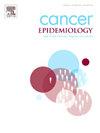医院是意大利癌症患者的死亡地点:基于登记的分析和时间趋势。
IF 2.4
3区 医学
Q3 ONCOLOGY
引用次数: 0
摘要
背景:死亡地点与个人和社会都息息相关。人们普遍认为家是最佳的死亡地点,而在医院死亡则可能是临终关怀不当的信号。我们旨在研究五年内意大利癌症患者的死亡地点:我们分析了意大利国家统计局(ISTAT)发布的死亡证明数据库,搜索了死亡地点和与死亡相关的主要疾病。为排除COVID大流行的影响,使用了2015年至2019年的数据。癌症、"认知障碍和阿尔茨海默病"(CIAD)和 "心血管和脑血管疾病"(CCD)是研究的疾病。死亡地点分为 "急症护理医院"、"临终关怀 "或 "其他长期护理(LTC)机构 "和 "家庭"。我们采用普通线性回归模型来验证所选时间(i)之间是否存在统计学意义上的显著差异,以及是否可以假设死亡地点之间存在替代效应(ii):检索到 769 517 例死亡数据。2019年,35.39%的癌症患者死于医院,39.57%死于家中,20.06%死于临终关怀机构或其他长期护理机构。在调查期内,在家中死亡的比例下降了 3.09 %(95 % C.I. -3.18 - -2.99;p 结论:三分之一以上的癌症患者死于急症医院,在分析期内,这一比例略有上升。所有受检疾病的居家死亡率均有所下降。在家中死亡的情况正在逐渐减少,而医院仍然是一个常见的死亡地点。本文章由计算机程序翻译,如有差异,请以英文原文为准。
Hospital as a site of death of cancer patients in Italy: A registry-based analysis and time trends
Background
Place of death is relevant both for individuals and for the society. Home is universally considered the optimal place of death while dying in hospital may be a signal of inappropriate end-of-life care. We aimed at studying the place of death of patients with cancer in Italy in a five-year period.
Patients and methods
The death-certificate database published by the Italian National Institute of Statistics (ISTAT) was analysed, searching the place of death and the main disease related to death. Data from 2015 to 2019 were used, to exclude the influence of the COVID pandemic. Cancer, “cognitive impairment and Alzheimer’s disease” (CIAD) and “cardiovascular and cerebrovascular diseases” (CCD) were the examined diseases. The place of death was categorized as “acute care hospital”, “hospice” or “other long-term care (LTC) structures” and “home”. We implemented an ordinary linear regression model to verify whether there was a statistically significant variation across the selected time (i), and whether a substitution effect among sites of death could be hypothesized (ii).
Results
Data on 769,517 deaths were retrieved. In 2019 35.39 % patients with cancer died in hospital, 39.57 % died at home and 20.06 % died in hospice or in other LTC structures. In the examined period, death at home decreased by 3.09 % (95 % C.I. −3.18 - −2.99; p<0.01); death in hospice and long-term structures increased by 2.71 % (95 % C.I. 2.66 – 2.76; p<0.01); death in hospital increased by 0.3 % (95 % C.I. 0.23 – 0.36; p<0.01). For patients with CIAD, death in hospital increased by 0.98 % (95 % C.I. 0.80 – 1.17; p<001) and for patients with CCD decreased by 1.43 % (95 % I.C. −1.47 – −1.39; p<0.01). Death at home decreased in both diseases.
Conclusions
More than one-third of cancer patients die in acute care hospitals and this percentage is slightly increasing in the analysed period. Mortality at home decreased in all the examined diseases. Dying at home is being progressively less frequent, while hospitals continue to represent a frequent place of death.
求助全文
通过发布文献求助,成功后即可免费获取论文全文。
去求助
来源期刊

Cancer Epidemiology
医学-肿瘤学
CiteScore
4.50
自引率
3.80%
发文量
200
审稿时长
39 days
期刊介绍:
Cancer Epidemiology is dedicated to increasing understanding about cancer causes, prevention and control. The scope of the journal embraces all aspects of cancer epidemiology including:
• Descriptive epidemiology
• Studies of risk factors for disease initiation, development and prognosis
• Screening and early detection
• Prevention and control
• Methodological issues
The journal publishes original research articles (full length and short reports), systematic reviews and meta-analyses, editorials, commentaries and letters to the editor commenting on previously published research.
 求助内容:
求助内容: 应助结果提醒方式:
应助结果提醒方式:


